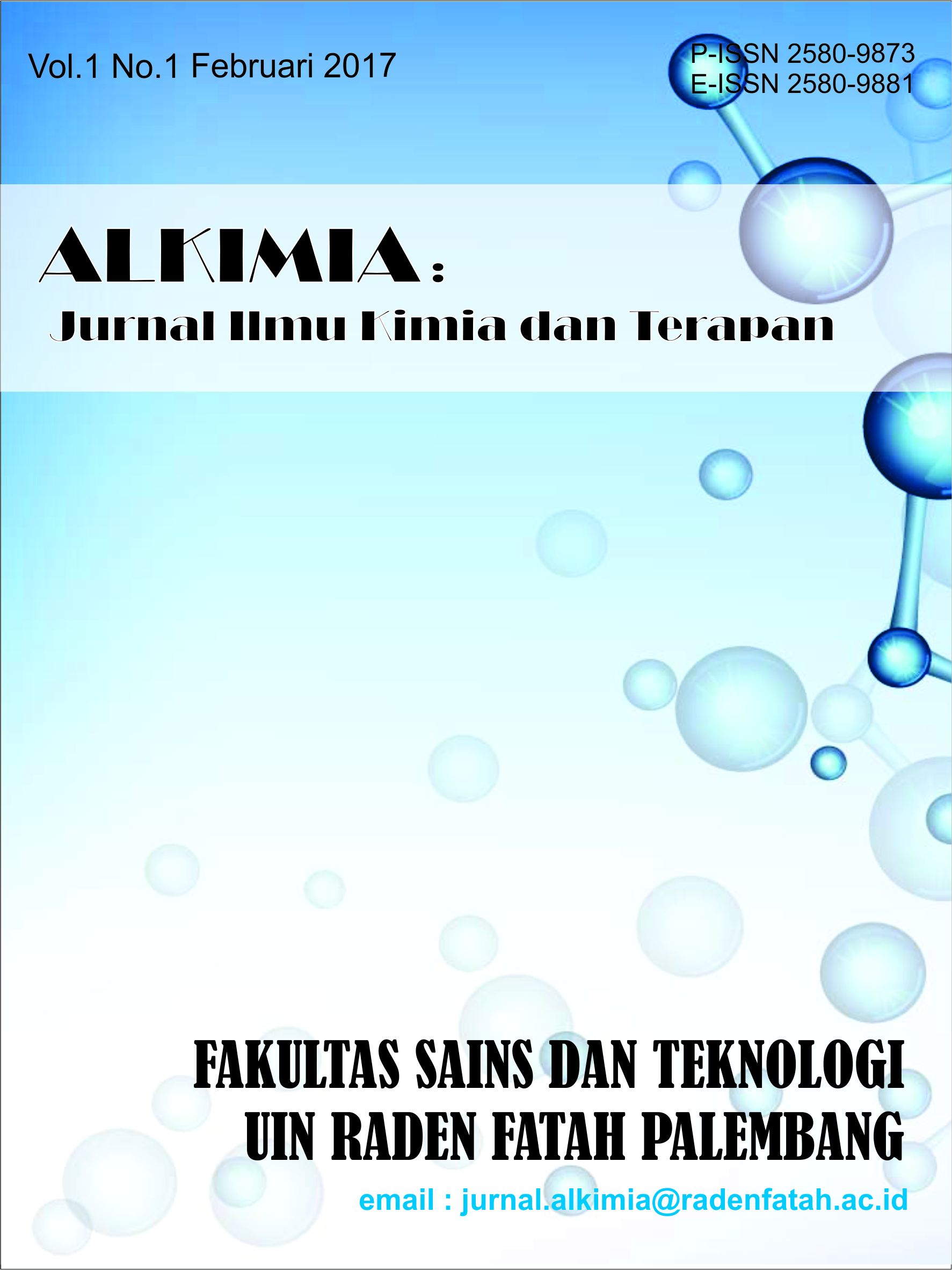Bioethanol from Rice Washing Wastewater with Variations in Addition of NPK and Fermentation Time
DOI:
https://doi.org/10.19109/q0wj7p34Keywords:
enzyme, Fermentation, RiceAbstract
Rice-washing wastewater has the potential as a raw material for making bioethanol because it still contains carbohydrates. Adding NPK with the appropriate fermentation time can affect the levels of bioethanol produced. This study aims to determine the effect of the addition of NPK and fermentation time on the levels of bioethanol produced in the manufacture of bioethanol from rice-washing wastewater. Variations in the amount of NPK (5, 10, and 15 g) and variations in fermentation time (3, 5, and 7 days) are seen in their effect on the yield and characteristics of the bioethanol produced. The characteristics of bioethanol include content, specific gravity, API Gravity (American Petroleum Institute), calorific value, water content, density measurement with a densitometer instrument and qualitative analysis of bioethanol with a gas chromatography instrument. The highest bioethanol yield was 34% with the treatment of variations in adding 15 g of NPK and a fermentation time of 7 days. Based on the two-way ANOVA test results, the addition of NPK (5, 10, and 15 g) and the difference in fermentation time (3, 5, and 7 days) significantly affected the levels of bioethanol produced from rice-washing wastewater. The addition of 15 g of NPK and a fermentation time of 7 days provided the best bioethanol characteristics, with a bioethanol content of 20.84%. Using rice-washing wastewater with NPK and optimal fermentation time provides another alternative in developing bioethanol raw materials.
References
A. Bušić et al., “Bioethanol Production from Renewable Raw Materials and its Separation and Purification: a Review,” Food Technol. Biotechnol., vol. 56, no. 3, 2018, doi: 10.17113/ftb.56.03.18.5546.
T. A. Moonsamy, M. Mandegari, S. Farzad, and Johann. F. Görgens, “A new insight into integrated first and second-generation bioethanol production from sugarcane,” Industrial Crops and Products, vol. 188, p. 115675, Nov. 2022, doi: 10.1016/j.indcrop.2022.115675.
T. S. Lubena, Donna Imelda, Flora Elvistia, Aditya Heksa Putra, “Pemanfatan Air Cucian Beras untuk Pembuatan Biethanol melalui Proses Hidrolisis dan Fermentasi,” Jurnal Ilmiah Program Studi Magister Teknik Mesin, vol. 11, no. 3, p. 206, 2019.
E. Fadillah, “Pembuatan Bioetanol Dari Air Limbah Cucian Beras Menggunakan Metode Hidrolisis Enzimatik Dan Fermentasi,” JURRITEK, vol. 1, no. 2, pp. 150–154, Oct. 2022, doi: 10.55606/jurritek.v1i2.2787.
C. G. M. Wulandari, S. Muhartini, and S. Trisnowati, “Pengaruh Air Cucian Beras Merah Dan Beras Putih Terhadap Pertumbuhan Dan Hasil Selada (Lactuca sativa L.),” Vegetalika, vol. 1, no. 2, pp. 24–35, 2013.
R. Eni, W. Sari, and R. Moeksin, “Pembuatan Bioetanol dari Air Limbah Cucian Beras Menggunakan Metoda Hidrolisis Enzimatik dan Fermentasi,” Jurnal Teknik Kimia, vol. 21, no. 1, pp. 14–22, 2015.
S. D. Lira Aulia Wahyuni, Elvi Yenie, “Pengaruh Variasi Penambahan Ragi Tape Dan Npk Terhadap Konsentrasi Bioetanol Hasil Fermentasi Jerami Padi,” Jurnal Teknik Kimia, vol. 2, no. Februari, p. 1, 2015.
V. M. Benassi, T. M. Pasin, F. D. A. Facchini, J. A. Jorge, and M. De Lourdes Teixeira De Moraes Polizeli, “A novel glucoamylase activated by manganese and calcium produced in submerged fermentation by Aspergillus phoenicis,” J. Basic Microbiol., vol. 54, no. 5, pp. 333–339, May 2014, doi: 10.1002/jobm.201200515.
R. M. Fiana, N. Novelina, and A. Asben, “Characteristic Of Ph And Temperature Of Crude Extract Of Glukoamilase From Gliocladium by Using Solid Substrate Of Sago Hampas,” And. Int. J. Agric. Nat. Sci., vol. 3, no. 01, pp. 1–11, Mar. 2022, doi: 10.25077/aijans.v3.i01.1-11.2022.
B. M. RTM Sutamihardja, M Azizah, “Comparison Hydrolisis of Enzymatic and Acid of Sweet Corn Starch ( Zea mays L .) in Liquid Sugar Production,” no. 722, 2017.
N. Nasrun, J. Jalaluddin, and M. Mahfuddhah, “Pengaruh Jumlah Ragi dan Waktu Fermentasi terhadap Kadar Bioetanol yang Dihasilkan dari Fermentasi Kulit Pepaya,” Jurnal Teknologi Kimia Unimal, vol. 4, no. 2, p. 1, 2017, doi: 10.29103/jtku.v4i2.68.
T. J. Tse, D. J. Wiens, and M. J. T. Reaney, “Production of Bioethanol—A Review of Factors Affecting Ethanol Yield,” Fermentation, vol. 7, no. 4, p. 268, Nov. 2021, doi: 10.3390/fermentation7040268.
M. Ikhwan, I. Qiram, A. Mukhtar, and G. Rubiono, “Uji Produk dan Karakteristik Nyala Api Bioetanol Limbah Batang Tembakau,” Jurnal Mekanik Terapan, vol. 3, no. 1, pp. 1–7, 2022, doi: 10.32722/jmt.v3i1.4362.
D. Sulaiman, “Analisis Uji Karakteristik Bioetanol Dari Pisang Hutan Terhadap Variasi Massa Ragi,” Jurnal Kumparan Fisika, vol. 4, no. 3, pp. 169–176, 2021, doi: 10.33369/jkf.4.3.169-176.
R. Visca, M. N. Dewi, M. Sinaga, and S. Nurcahyati, “Optimasi Dosis Enzim Glukoamilase dan Waktu Fermentasi dalam Produksi Bioetanol dari Air Cucian Beras,” Jurnal Sumberdaya Alam dan Lingkungan, vol. 7, no. 3, pp. 101–107, 2020, doi: 10.21776/ub.jsal.2020.007.03.2.
M. Wang et al., “Nutrient Consumption Patterns of Saccharomyces cerevisiae and Their Application in Fruit Wine Fermentation,” Fermentation, vol. 10, no. 11, p. 539, Oct. 2024, doi: 10.3390/fermentation10110539.
M. K. Conway, D. Grunwald, and W. Heideman, “Glucose, Nitrogen, and Phosphate Repletion in Saccharomyces cerevisiae : Common Transcriptional Responses to Different Nutrient Signals,” G3 Genes|Genomes|Genetics, vol. 2, no. 9, pp. 1003–1017, Sep. 2012, doi: 10.1534/g3.112.002808.
Downloads
Published
Issue
Section
License
Copyright (c) 2024 Nur Rahmah Maulina, Devy Susanty, Nurlela Nurlela, Nina Ariesta

This work is licensed under a Creative Commons Attribution-ShareAlike 4.0 International License.
- The author saves the copyright and gives the journal simultaneously with the license under Creative Commons Attribution License which permits other people to share the work by stating that it is firstly published in this journal.
- The author can post their work in an institutional repository or publish it in a book by by stating that it is firstly published in this journal.
- The author is allowed to post their work online (for instance, in an institutional repository or their own website) before and during the process of delivery. (see Open Access Effect).







.png)




